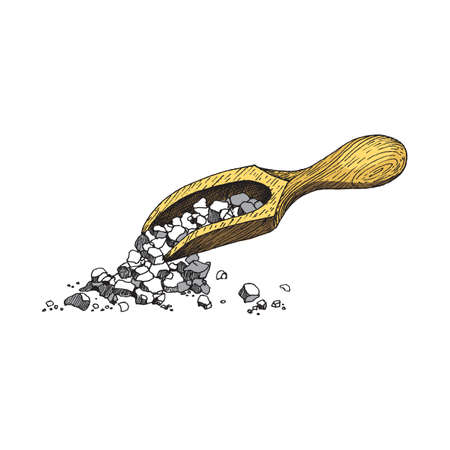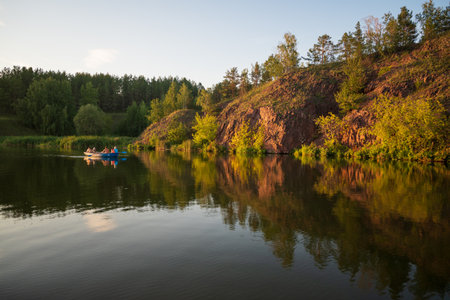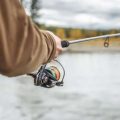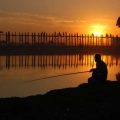1. Understanding the Lake of the Woods Environment
If you’re planning an ice fishing trip to Lake of the Woods in Minnesota, getting familiar with its unique environment is a must. This massive lake sits at the northern edge of Minnesota, bordering both Canada and the state’s Northwest Angle, making it one of the premier ice fishing destinations in North America.
Climate and Weather Conditions
Lake of the Woods is known for its long, cold winters. Temperatures can plummet well below zero from December through March, with wind chills making it feel even colder. Thick ice typically forms by early December and lasts into late March. Here’s a quick look at typical winter conditions:
| Month | Average Low (°F) | Average High (°F) | Typical Ice Thickness (inches) |
|---|---|---|---|
| December | -2 | 15 | 8-12 |
| January | -8 | 10 | 16-24 |
| February | -6 | 16 | 20-30 |
| March | 7 | 29 | 20-30+ |
Geography: What Makes It Special?
The lake covers over 950,000 acres and has more than 14,000 islands—so there’s plenty of room to explore. Its diverse underwater structure includes deep holes, rocky reefs, weed beds, and expansive mud flats. This variety creates ideal habitats for popular fish species like walleye, sauger, northern pike, and perch.
Main Fishing Areas on Lake of the Woods:
- The South Shore: Most accessible and popular for resorts and rental ice shacks.
- The Northwest Angle: Remote area with excellent multi-species action.
- Bays and Reefs: Key spots for targeting big walleyes and trophy pike.
What You Need to Know About Safety and Preparation
The sheer size of Lake of the Woods means weather can change quickly and visibility can drop fast during snowstorms or high winds. Always check local ice reports before heading out, and never assume uniform ice thickness across the lake. Be prepared for remote conditions—cell service may be spotty in some areas, so let someone know your plans ahead of time.
2. What to Pack: Gear and Essentials
Before you head out for ice fishing on Lake of the Woods, Minnesota, packing the right gear can make all the difference between a memorable adventure and a miserable one. Here’s a straightforward guide to the essentials that will keep you warm, safe, and ready for action.
Clothing: Dress for the Weather
The Minnesota winter is no joke. Layering is your best friend out on the ice. Here’s what you’ll want to bring:
| Item | Why You Need It |
|---|---|
| Base Layer (thermal underwear) | Keeps moisture away from your skin and adds warmth |
| Mid Layer (fleece or wool) | Provides insulation without bulk |
| Outer Layer (waterproof jacket & bibs) | Protects against wind, snow, and cold |
| Wool Socks | Keeps your feet dry and warm |
| Insulated Boots | Prevents frostbite and keeps toes comfortable |
| Gloves/Mittens | Mittens are warmer; gloves allow better dexterity |
| Hat & Neck Gaiter/Balaclava | Covers exposed skin from biting wind |
| Sunglasses/Goggles | Protects eyes from sun glare off the snow and ice |
Fishing Gear: The Essentials
You don’t need to break the bank on fancy equipment, but having reliable basics helps you fish comfortably and efficiently:
- Ice Auger: Manual or powered auger to drill holes through thick ice.
- Iced Rods & Reels: Shorter rods designed for vertical jigging.
- Tackle Box: Jigs, spoons, hooks, sinkers, line, and live bait like minnows or wax worms.
- Buckets or Sled: For carrying gear and storing caught fish (a five-gallon bucket doubles as a seat).
- Fish Finder/Flasher: Helpful for locating active fish under the ice.
- Bait Container: Keeps live bait healthy in freezing temps.
- Lip Gripper or Pliers: For safe hook removal.
- Scoop/Skimmer: Removes slush from drilled holes.
- Thermos with Hot Drink: Coffee, tea, or cocoa to help stay warm.
Shelter & Safety Equipment
- Portable Ice Shelter or Hub House: Shields you from wind and blowing snow; some models are insulated for extra warmth.
- Heater (propane or catalytic): Make sure it’s approved for indoor use—ventilate your shelter!
- Creepers/Ice Cleats: Attach to boots to prevent slipping on slick ice.
- Icepicks/Safety Spikes: Wear around your neck to help pull yourself out if you fall through the ice.
- PFD (Personal Flotation Device): Especially important early or late in the season when ice thickness is unpredictable.
- First Aid Kit: Be prepared for minor injuries like hooks or cuts.
- Headlamp/Flashlight & Extra Batteries: Days are short in winter; good lighting is crucial for early starts or late finishes.
A Quick Packing Checklist
| Don’t Forget These Extras! | |
|---|---|
| Snacks/Lunches (energy bars, jerky, sandwiches) |
No one wants to fish hungry! |
| Pocket Knife/Multitool | Tackles unexpected fixes or emergencies |
| Duct Tape & Zip Ties | Makeshift repairs if something breaks down on the ice |
| Phone & Portable Charger (in waterproof bag) |
Saves the day for navigation, emergencies, or sharing catches with friends back home! |
| ID & Fishing License (Minnesota requires one!) |
Avoid fines by keeping it handy at all times. |
A Note on Local Conditions
The weather on Lake of the Woods can change quickly. Always check ice conditions with local bait shops or resorts before heading out. Bring extra layers just in case. And remember: safety first—never take unnecessary risks out there!

3. Staying Safe on the Ice
Ice fishing on Lake of the Woods is an amazing experience, but safety always comes first. Minnesota winters can be unpredictable, so knowing how to monitor ice thickness, watch for changing conditions, and prepare for emergencies is crucial. Here are some straightforward tips to help keep your trip safe and enjoyable.
How Thick Should the Ice Be?
Always check the ice thickness before heading out. Use an auger or ice chisel near the shore and work your way out. Heres a handy guide:
| Ice Thickness | Safe For |
|---|---|
| 4 inches | Walking/ice fishing alone |
| 5-7 inches | Snowmobile or ATV |
| 8-12 inches | Small car or pickup truck |
| 13-15+ inches | Medium trucks or heavier vehicles |
Remember: No ice is ever 100% safe. Always check local reports and talk to bait shop owners or resort staff—they know the current conditions best.
Navigating Changing Conditions
- Stay alert for cracks, slush, or pressure ridges. These can appear suddenly and may mean thin or unstable ice nearby.
- Avoid dark spots and areas near moving water. Inlets, outlets, and currents make ice weaker, even in cold weather.
- Carry a spud bar and test as you go. Don’t assume yesterday’s safe spot is still good today.
- Mark your entry point. Snowstorms can make it hard to find your way back—bring GPS or use trail markers.
Be Ready for Emergencies
- Tell someone where you’re going and when you’ll return.
- Packing essentials:
| Item | Why You Need It |
|---|---|
| Ice picks/ice claws | If you fall in, these help pull yourself out quickly. |
| Life jacket or float suit | Adds buoyancy if you break through the ice. |
| Tow rope/throw bag | You can help others safely from a distance. |
| Cell phone (in waterproof case) | Call for help if needed; keep it dry! |
| First aid kit & hand warmers | Treat minor injuries and prevent frostbite. |
| Whistle or air horn | Easier than yelling for help over wind and snow. |
If someone does fall in, call 911 immediately, don’t run toward the hole, and use a rope or long branch to reach them from a safe distance. Quick action saves lives, but staying calm makes all the difference. With these simple precautions, your adventure on Lake of the Woods can be both thrilling and safe!
4. Choosing the Best Fishing Spots
Tips on Finding Productive Locations on Lake of the Woods
Picking the right spot on Lake of the Woods can make or break your ice fishing trip. This lake is massive, with over 14,000 islands and endless bays, so knowing where to start is half the battle. Here are some straightforward tips to help you find those hot spots where the fish are biting:
Local Hotspots Worth Trying
| Area | What Makes It Special | Target Species |
|---|---|---|
| Northwest Angle | Deep water near islands and structure, less fishing pressure | Walleye, Sauger, Perch |
| Zippel Bay | Easy access, popular for early season action | Walleye, Northern Pike |
| Morris Point Gap | Mouth of the Rainy River, strong current attracts fish | Walleye, Sauger |
| Pine Island Area | Good mid-winter bite, plenty of rental houses available | Walleye, Perch |
| Baudette Bay | Great for families and beginners, close to shore and amenities | Northern Pike, Panfish |
How to Read the Ice for Better Fishing Spots
The key to finding fish in winter is understanding how they move as the season changes. Early in the season, walleye and sauger stick close to shorelines and shallow reefs. As winter deepens, fish head toward deeper structure like underwater humps and drop-offs. Keep an eye out for:
- Changes in Ice Color: Darker patches often mean thinner ice or moving water—avoid these areas for safety but know that nearby transition zones can be great for fishing.
- Old Holes and Tracks: Lots of old holes usually mean other anglers had success there. Give these spots a try but don’t crowd others.
- Shelters Clustered Together: A group of ice shacks often signals a productive area. If you see locals set up in one spot, it’s worth checking out (just be respectful of their space).
- Bait Shops and Guides: Local bait shops always know what’s hot—ask about recent catches and recommended depths.
- Depth Changes: Use a portable sonar or check contour maps. Fish love to hang out where shallow flats drop into deeper water.
Quick Reference: What Depths Work Best?
| Time of Season | Recommended Depth (Feet) |
|---|---|
| Early Season (Dec-Jan) | 12-18 ft near shore & reefs |
| Mid-Winter (Jan-Feb) | 18-28 ft over deeper structure/humps |
| Late Season (Feb-Mar) | Back to 10-20 ft as fish move shallower again |
The best fishing spots can change from day to day due to weather and fish movement. Dont be afraid to move around if you’re not getting bites after 30-60 minutes. Stay flexible and keep safety first—always check ice thickness before venturing onto new areas.
5. Popular Fish Species and Effective Techniques
Lake of the Woods in Minnesota is an ice angler’s paradise, offering a variety of fish species that are both fun to catch and great for a shore lunch. Here’s an overview of the most common fish you’ll encounter during your ice fishing adventure, along with some practical tips on how to reel them in.
Main Fish Species You’ll Find
| Species | Best Time to Catch | Typical Size |
|---|---|---|
| Walleye | Early morning, late afternoon | 14-28 inches |
| Sauger | All day (especially midday) | 10-18 inches |
| Northern Pike | Midday, warmer weather spells | 20-40+ inches |
| Perch | Morning and late afternoon | 8-12 inches |
| Burbot (Eelpout) | Nighttime, especially mid-winter | 16-25 inches |
Tried-and-True Ice Fishing Techniques
Walleye & Sauger: Jigging with Live Bait or Spoons
The classic approach for walleye and sauger is jigging near the bottom with small spoons or jigs tipped with a minnow head. Electronics like flashers help you locate active schools. Move around until you find biting fish—mobility matters!
Northern Pike: Tip-Ups with Large Minnows
Pike are aggressive predators. Set up tip-ups with big live minnows or dead bait just off weed edges or drop-offs. Use a steel leader to prevent bite-offs. Check flags often—they hit hard and run fast!
Perch: Small Jigs and Waxworms
For jumbo perch, downsize your tackle. Use tiny jigs tipped with waxworms or soft plastics right above the lake bottom. Perch often school tightly, so once you find one, more are likely nearby.
Burbot: Glow Lures After Dark
Burbot bite best at night. Try jigging glow-in-the-dark lures baited with cut minnows right on the bottom. They like rocky areas and deep holes—don’t be afraid to venture out after sunset if you’re feeling adventurous.
Quick Reference Table: Best Baits & Depths by Species
| Species | Bait/Presentation | Target Depth (ft) |
|---|---|---|
| Walleye/Sauger | Spoon/Jig + Minnow Head | 15-30 |
| Northern Pike | Tip-Up + Large Minnow/Dead Bait | 6-15 |
| Perch | Tiny Jig + Waxworm/Soft Plastic | 10-20 |
| Burbot | Glow Jig + Cut Minnow | 20-35 |
Local Tips from Minnesota Anglers:
- If you’re not getting bites, don’t be afraid to switch spots—sometimes just moving 50 feet makes all the difference.
- Dress warm but stay mobile; portable shelters make it easy to chase active schools.
- If you catch a trophy fish, snap a quick photo and release it to keep Lake of the Woods thriving for future anglers.
This mix of species and techniques is what makes ice fishing on Lake of the Woods truly special. With a little patience and the right approach, you’re sure to have a memorable day on the ice.
6. Local Regulations and Responsible Angling
Understanding Minnesota Fishing Regulations
If you plan to ice fish on Lake of the Woods, its essential to know the fishing rules in Minnesota. The state has specific regulations to keep fish populations healthy and make sure everyone has a fair chance to enjoy the lake. Here are some key rules you need to be aware of:
| Regulation | Details |
|---|---|
| Fishing License | All anglers age 16 and older must have a valid Minnesota fishing license. You can purchase one online, at sporting goods stores, or convenience stores near the lake. |
| Season Dates | Certain species have open and closed seasons. Check the current season dates for walleye, northern pike, sauger, and other local fish before your trip. |
| Bag & Possession Limits | There are daily limits on how many fish you can keep for each species. For example, the walleye/sauger limit is typically six per day (with no more than four being walleye), but always check current rules. |
| Bait Restrictions | Some bait types are restricted to prevent invasive species. Make sure your bait is allowed on Lake of the Woods. |
| Ice Shelter Registration | If you use a portable or permanent ice shelter overnight, it may need to be licensed with the Minnesota DNR. Mark your shelter with your name and address or driver’s license number. |
Responsible Angling Practices
Caring for the environment helps keep Lake of the Woods a top destination for years to come. Here are some easy ways you can fish responsibly:
- Pack Out Trash: Always take your garbage with you, including fishing line, bait containers, and food wrappers.
- Release Fish Properly: If you catch a fish you don’t plan to keep, handle it gently and return it quickly to the water to give it the best chance of survival.
- Avoid Spreading Invasive Species: Clean your boots, sleds, and gear before moving between lakes. Dispose of unused bait in the trash—not in the lake.
- Respect Other Anglers: Give others plenty of space on the ice and keep noise down.
- Follow All Posted Signs: Watch for updates from local authorities or conservation officers regarding ice conditions and special regulations.
Your Role as a Visitor
Treating Lake of the Woods with care helps preserve its natural beauty and abundant fishing for everyone. By following state regulations and practicing responsible angling, you’re helping ensure this incredible spot stays healthy and welcoming for future trips.


